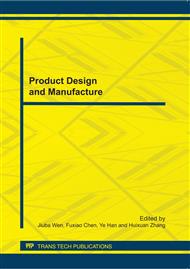p.218
p.222
p.226
p.230
p.235
p.239
p.243
p.248
p.254
A Study for the Mirror Surface Polishing by Using the Ring Shaped Tool
Abstract:
The feasibility of mirror surface polishing by using the ring shaped tool (abbreviated as the RST) is studied. This novel polishing process is expected to apply in the fabrication of precise mold and optics. In order to reduce the tool wear effect, the semi-spherical tool was replaced by the ring shaped tool. The experimental results show that the machining rate is not affected by the tool wear, That is, this new process provides excellent machining repeatability. On the other hand, the mirror surface with Ra 4.4nm was yielded in the lager area polishing.
Info:
Periodical:
Pages:
235-238
Citation:
Online since:
October 2011
Authors:
Keywords:
Price:
Сopyright:
© 2012 Trans Tech Publications Ltd. All Rights Reserved
Share:
Citation:


